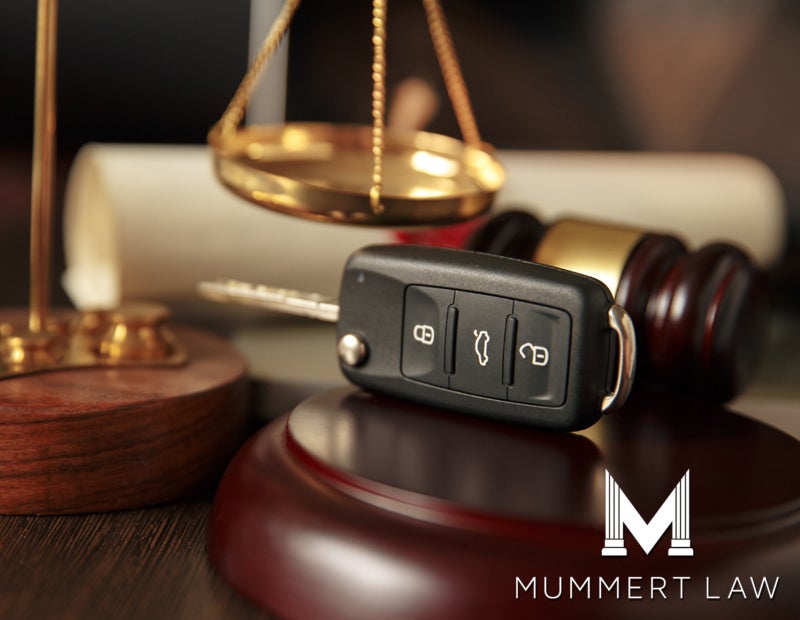-
Can I Keep My Car If I File for Bankruptcy?
 Besides protecting their homes, people are most concerned about keeping their cars when filing for bankruptcy. So, we’ll share with you what protecting your vehicle looks like when filing either Chapter 7 or Chapter 13 bankruptcy.
Besides protecting their homes, people are most concerned about keeping their cars when filing for bankruptcy. So, we’ll share with you what protecting your vehicle looks like when filing either Chapter 7 or Chapter 13 bankruptcy.Bankruptcy helps offer a financial solution to manage better or clear overwhelming debt. And deciding which chapter to file while protecting your car will look different, depending on answers to a few questions. For example, are you behind on your payments? How much equity is in your vehicle? Will you be able to continue to pay for your car in the future?
If You Must Keep Your Car – Chapter 7 Bankruptcy
Chapter 7 bankruptcy aims to eliminate most, if not all, of your debt in exchange for your property. Protecting your car in Chapter 7 will depend on whether you’re behind and if your equity is exempt. If your vehicle is worth more than what you owe, or you own it outright, you will need to protect it with a bankruptcy exemption.
Vehicle Exemption
To protect certain kinds of property you have equity in, like vehicles, you’d have to apply for an exemption. An exemption permits you to keep specific property so that you can begin with a fresh start after bankruptcy.
Maryland has property exemptions to include insurance, pensions, personal property, tools of the trade, and wages. However, the state doesn’t have a vehicle-specific exemption. Nor does Maryland bankruptcy law permit debtors to choose federal exceptions (e.g., a federal vehicle exemption). But, the state does have a wildcard exemption that offers filers flexibility, and you can apply it to vehicles. Note – to use a state exemption, Maryland requires individuals that file to have lived in the state for at least two years.
The Wildcard Exemption
The Maryland wildcard exemption includes an exemption:
- Up to $6,000 in cash or other property
- Up to $5,000 in property of any kind
You can apply one or both of these exemptions to your vehicle. So, for example, if you need $3,000 of your cash property exemption to cover your tax refund, you can use the remaining $3,000, plus the entire $5,000 in personal property to protect your car, totaling $8,000. Or you can use the entire $11,000 exemption for your vehicle. At Mummertlaw, we are experienced in protecting your cars that have equity.
Are You Behind on Payments?
If your car is worth less than what you owe, you’ll have to keep making payments on it to keep it. Because your vehicle is probably collateral against the loan, the loan is a secured debt. And if you don’t pay the loan as previously agreed upon, the lender can repossess the car. Unfortunately, filing for bankruptcy doesn’t remove the lender’s lien, so you’ll have to continue paying off your car or pay for it a different way.
When you file for Chapter 7, you should be current on your car payments because there’s no mechanism to catch up on missed payments. You’ll have to create a new plan with the lender, or you’ll lose your vehicle. But you could redeem the car or reaffirm the debt to keep your vehicle.
Redeeming vs. Reaffirming
With Chapter 7, if you owe more than what your car is worth, you can redeem your car and own it outright. You can do this by paying the lender how much you owe on the vehicle or fair market value, whichever one is the least amount. There are lenders who will loan you money to redeem your car.
You can also reaffirm your vehicle, which means that you agree that this is a valid debt and that you owe your creditor a certain quantity of money. You will continue to pay on this debt even after your bankruptcy case ends. Therefore, the debt is essentially not part of the bankruptcy, and you won’t be able to discharge it.
Please note that reaffirmation leaves you with remaining debt after your bankruptcy, so proceed with caution. If you default on the loan at a later date, you’ll be liable for the balance. We will discuss this option before entering into this option.
If You Must Keep Your Car – Chapter 13 Bankruptcy
Chapter 13 bankruptcy allows you to reorganize your debt, making reasonable arrangements to pay off what you can over time. For example, suppose you have more equity in your secured assets than you can protect with your Maryland exemptions. In that case, you can reorganize through Chapter 13 rather than liquidate with Chapter 7.
With Chapter 13, you can:
- Stop a repossession
- Catch up on your car payment
- Possibly reduce your car loan
You can pay off your car through your repayment plan. You’d make that payment through your bankruptcy trustee, and they’d send a portion to your car lender. However, with Chapter 13, you’ll have to prove you can afford to pay what’s entitled to your creditors in a repayment plan.
In a Chapter 13 bankruptcy, you can protect your vehicle even if your equity is too much to cover in Chapter 7. To do this, you’ll have to pass the liquidation test.
The Liquidation Test
You’ll need to ensure your Chapter 13 payment plan pays the same amount of money to the creditors that they’d receive in Chapter 7. This is known as a liquidation test. Unsecured creditors, such as those you pay your car loan to, must be paid as much as they would in Chapter 7 liquidation.
Cramdown your Car Loan
If you have had your car loan for 910 days or more, and you owe more than your car is worth, you may be eligible to cramdown your car loan. This is also an option for people that have a high-interest rate on their car loans.
When You Can’t Keep Your Car with Chapter 13
There are a few instances where you might not be able to keep your car under Chapter 13:
- If you have more equity in your vehicle, then you can protect with an exemption
- You have an extremely high car payment and high interest
- You’re paying for a second vehicle that isn’t necessary
If you have questions about bankruptcy or are considering filing, Mummert Law can help! We are available for a consultation, at which time we’ll sit down together, evaluate your position, and determine the best way to proceed. So don’t go it alone when it comes to bankruptcy. Make your appointment with Mummert Law today!

